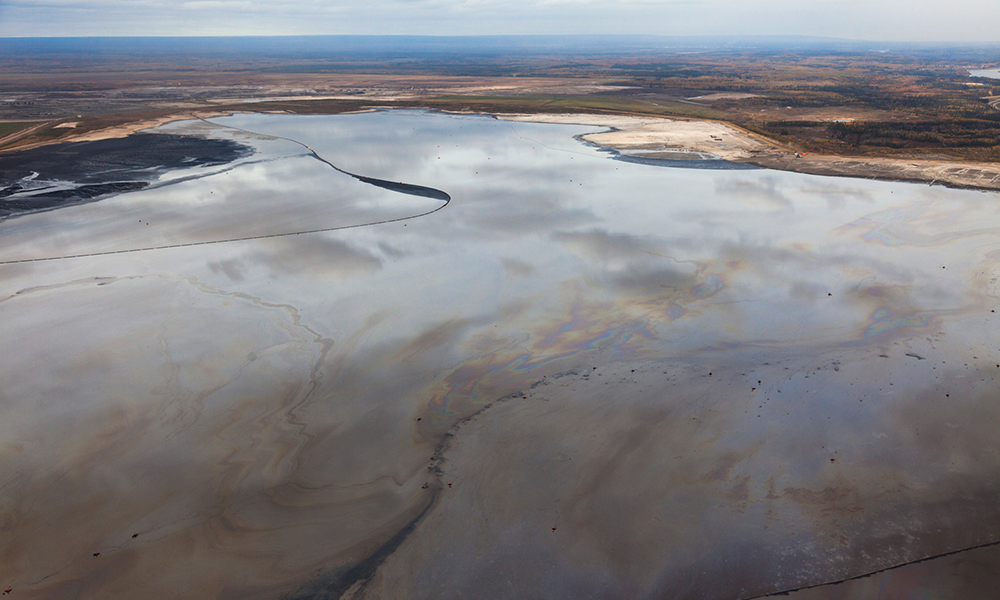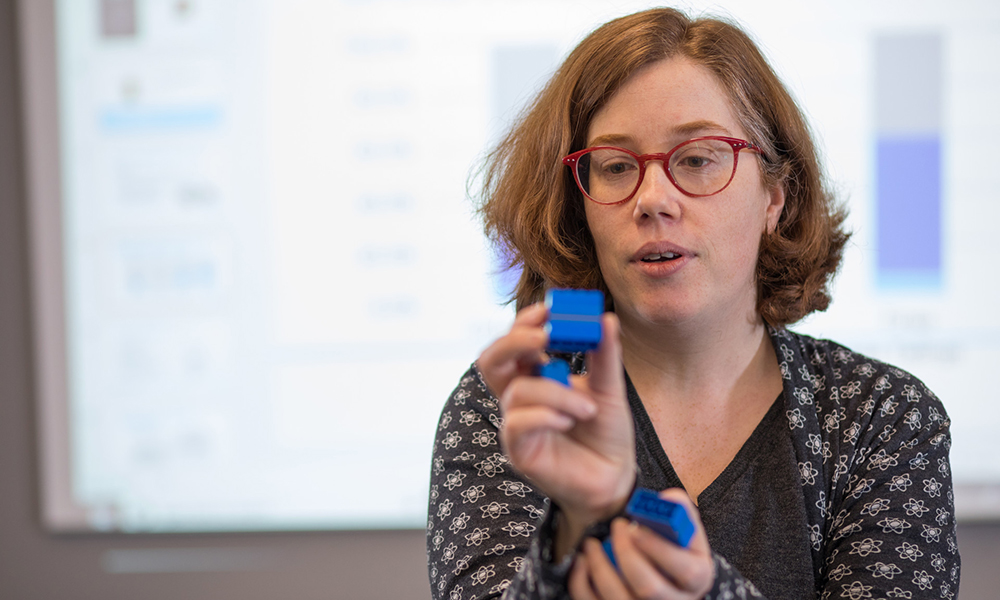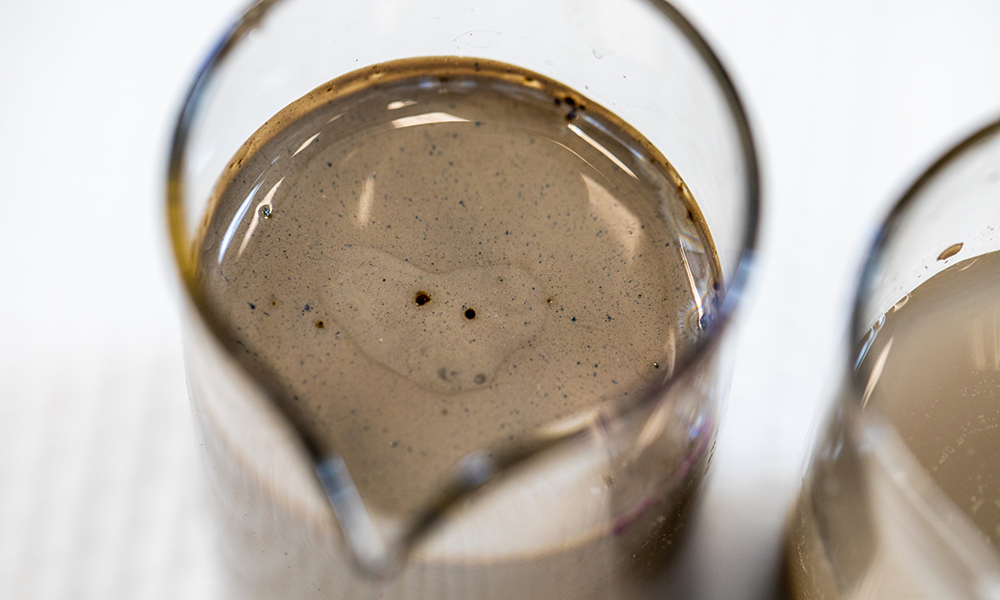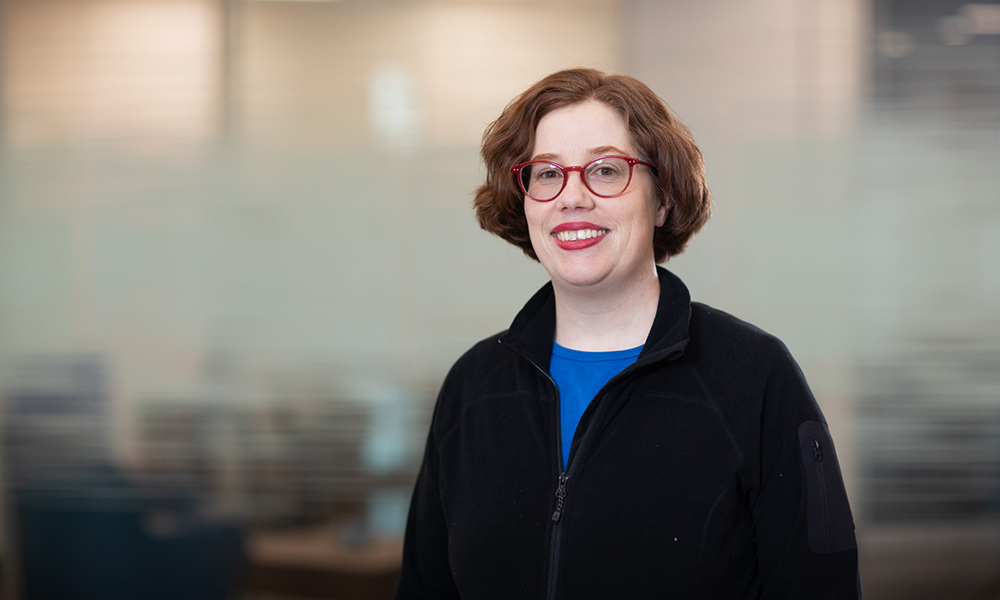Dr. Heather Kaminsky is “in a unique position to fill the communication gap”
Alberta’s oil sands tailings ponds are of a scale that makes them tough to address.
First there’s the sheer volume of the stuff – a byproduct of bitumen extraction that consists of water, sand, silt, clay and residual bitumen – which hovers around 1.4 billion cubic metres. (An Olympic-sized swimming pool, for reference, holds a mere 2,500 cubic metres.)
But there’s also the deluge of information on the ponds. The Alberta Energy Regulator’s Directive 85 governs fluid tailings management in the oil sands, part of which includes reporting. The 2021 filings from mining companies totalled more than 1,100 pages of text, tables, figures and lots of appendices.
Dr. Heather Kaminsky hopes to have a positive impact in both cases. As NAIT’s NSERC Industrial Research Chair for Colleges in Oil Sands Tailings Management, she likes the amount of research the reports contain. She worries, however, about the industry’s capacity to effectively share what's in them.
That’s why she created the Tailings Book Club.
Once a month, Kaminsky gathers a virtual community to discuss those reports and, therefore, the state of tailings in Alberta. She won’t deny that it gets technical. Anyone is welcome to register for her webinars, but much of her audience is operators and geotechnical engineers looking to learn about tailings management methods and results.
But the effort is meant to have as broad an impact as possible. By creating opportunities to share knowledge, Kaminsky feels she’s creating opportunities to improve approaches to dealing with one of the industry’s – and Alberta’s – biggest challenges.
“We have finite capacity to understand, to network,” says Kaminsky, “and tailings is a super complex issue. … I'm in a unique position at NAIT to fill the communication gap.”
Here’s how she does that, and what she hopes comes of it.
Starting the discussion

The model for the series emerged during the shutdowns of the pandemic, when lab work with graduate students Kaminsky supervised went on hiatus. To keep up engagement (and, frankly, combat loneliness), she asked them to find papers on tailings and report on them.
“It spawned a lot of discussion,” says Kaminsky.
When those corporate reports first began appearing on the regulator’s website around the same time, they struck her as perfect material for the forum. With the help Vicky Qualie, knowledge to practice services lead for NAIT's Centre for Oil Sands Sustainability, the transformation began.
In June 2021, the “book" club (a nod to the length of reports rarely shorter than 100 pages) was born. And, most importantly, it was opened up to industry members and beyond.
A story to tell

Kaminsky’s project may resemble more of an indepth show-and-tell than a book club, in that she does much of the talking during sessions attended by 20 to 40 participants. But it’s still meant to feel more like a story than a lecture.
“I take figures and tables from the reports and paste them in [to a presentation],” says Kaminsky. “I'm like, ‘Look, this is what we're talking about. This is why this is interesting.’ I'll try and explain a little bit about what it means.”
The heart of her stories is the unvarnished data – the real picture of what’s happening in Alberta’s tailings ponds.
The nature of the knowledge gap

Just as tailings ponds are the result of a confluence of processes, they’re the domain of a variety of thought processes and skill sets. “It's highly interdisciplinary,” says Kaminsky. “You need 10 or 15 different deep technical disciplines to really move forward.”
Outside of conferences, those deep technical types – from operators to technicians to engineers to scientists – may not have frequent chances to exchange info and ideas. Almost certainly, this is truer still when all those types are separated along corporate lines.
The book club erases those divisions. Over time, comparisons emerge between one company’s practices and another’s. “There are opportunities for efficiencies, cross pollination and just applying technologies to where they're most relevant,” says Kaminsky.
“This work helps to break down the silos and the communications gaps amongst those technical folks so that we can actually solve some of those bigger problems.”
Closing the gap

Kaminsky considers the regulatory reports to be “the snapshot of … a state of practice.”
They show how we’re dealing with tailings in Alberta and, by virtue of the challenges they may highlight, they indicate how we might deal with them in the future.
What’s more, Kaminsky’s reviews and questions that arise during sessions help guide her own research and the content for industry training, such as NAIT’s Oil Sands Tailings 101.
In the long term, she hopes that the book club plays a role in driving toward better solutions. She feels that Alberta already has the talent and skills for that. In the same way as the club started as a way to resolve isolation, she’d like to see it unite a community around innovation, rather than see that stunted by being buried in papers few people have the time to read.
“We are the world leaders in this,” says Kaminsky. “We should be hopeful. We should be celebrating our successes. And also never taking them for granted.”